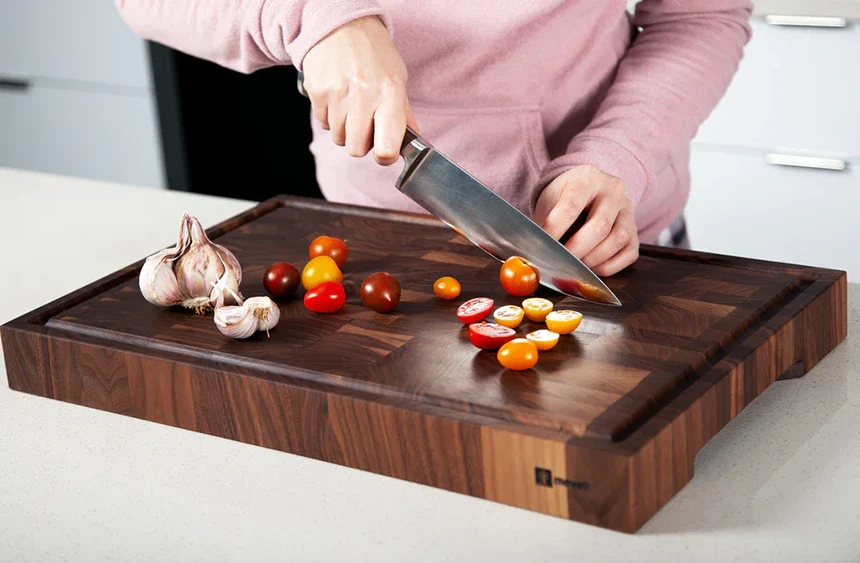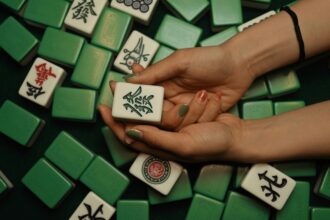Introduction to Cutting Boards
When it comes to cooking, having the right tools makes all the difference. A good Best Wood for Cutting Board is a kitchen essential, serving as your trusty sidekick for everything from chopping vegetables to slicing meats. But not all Best Wood for Cutting Board are created equal. The material you choose can impact not only the ease of food preparation but also the longevity and safety of your culinary companion.
If you’re wondering what makes a great Best Wood for Cutting Board, one key factor stands out: the wood. Selecting the best wood for cutting boards isn’t just about aesthetics; it’s about durability, maintenance, and hygiene. With so many options available—from rich hardwoods to softer varieties—making an informed choice can elevate your cooking experience while protecting your investment in kitchenware, notes Mabry Management team.
Join us on this journey through our ultimate guide on choosing the best wood for Best Wood for Cutting Board! Whether you’re a seasoned chef or just starting out in the kitchen, we’ll help you navigate through various wooden options and find that perfect match for your needs.
The Importance of Choosing the Right Wood
Choosing the right wood for your Best Wood for Cutting Board is crucial. It affects both functionality and hygiene.
Hardwoods like maple and walnut are popular choices. They provide a sturdy surface that can withstand daily use without dulling your knives.
Softwoods, on the other hand, can harbor bacteria more easily. Their porous nature absorbs liquids, making them less ideal for food preparation.
The grain of the wood matters too. End-grain boards tend to self-heal from knife cuts, prolonging their lifespan while minimizing wear.
A well-chosen Best Wood for Cutting Board enhances meal preparation efficiency. It creates an enjoyable cooking experience and adds aesthetic appeal to your kitchen space.
Investing in quality materials means investing in health as well as longevity—benefits you’ll appreciate every time you chop or slice.
Top 5 Woods for Cutting Boards
When selecting the best wood for Best Wood for Cutting Board, certain varieties stand out due to their durability and aesthetic appeal.
Maple is a popular choice, known for its fine grain and resistance to knife marks. It’s also a hard wood that can withstand daily use without showing much wear.
Walnut offers a rich color and beautiful patterns. Its slightly softer surface makes it gentler on knives while still being robust enough for heavy-duty chopping.
Cherry wood has a unique reddish hue that deepens with age. This type of wood is not only attractive but also boasts natural antibacterial properties.
Bamboo, though technically grass, deserves mention too. It’s eco-friendly and lightweight but remains surprisingly strong under pressure.
Teak stands apart with its oil-rich composition that naturally resists moisture and bacteria. Its stunning golden-brown tone adds elegance to any kitchen space.
Pros and Cons of Each Wood Type
Bamboo is a popular choice for Best Wood for Cutting Board. It’s lightweight and eco-friendly, but it can be harder on knife blades over time.
Maple offers a classic look and durability. Its tight grain resists deep cuts, yet it may absorb odors if not maintained properly.
Walnut is beautiful with its rich colors. It provides a good balance of durability and aesthetics, although it can be pricier than other options.
Cherry wood boasts natural antibacterial properties. However, its softer nature means it might show scratches more readily compared to hardwood alternatives.
Teak stands out for its water resistance thanks to natural oils. While it’s incredibly durable, sourcing teak sustainably can sometimes pose a challenge due to deforestation concerns.
Caring for Your Cutting Board
Caring for your Best Wood for Cutting Board is essential to prolong its life and maintain hygiene. After each use, rinse it with warm water, avoiding harsh soaps that can strip natural oils.
Dry the surface immediately to prevent warping or cracking. A damp board invites bacteria, so always ensure it’s bone-dry before storing.
Regularly applying food-safe mineral oil keeps the wood hydrated and prevents absorption of odors and stains. Aim for a monthly treatment or more if you notice dryness.
For deeper cleaning, a mixture of baking soda and water works wonders on stubborn stains. Gently scrub with this paste using a soft cloth or sponge.
Avoid soaking your Best Wood for Cutting Board in water; prolonged exposure can damage the fibers. With proper care, your wooden companion will be both functional and beautiful for years to come!
How to Care for Your Cutting Board
Caring for your Best Wood for Cutting Board is essential for longevity. Start with regular cleaning. After each use, wash it with warm, soapy water and a soft sponge. Avoid soaking the board; wood absorbs moisture and can warp.
Next, ensure thorough drying. Pat it dry immediately after washing or let it air dry in an upright position. This prevents mold growth.
Oil your Best Wood for Cutting Board every month or as needed to maintain its surface. Use food-safe mineral oil or beeswax to nourish the wood and create a protective barrier against moisture.
Be mindful of what you cut on your board too. Avoid slicing acidic foods directly, as they can damage the finish over time.
Store your board properly—avoid stacking heavy items on top of it to prevent warping or cracking while keeping it in a cool, dry place away from direct sunlight. Your cutting board will thank you!
Other Factors to Consider When Choosing a Cutting Board
When selecting a Best Wood for Cutting Board, size and thickness play crucial roles. A larger surface area provides ample space for food prep, while thicker boards offer durability and resistance to warping.
Consider the grain direction of the wood as well. End-grain boards tend to be gentler on knives, reducing wear over time compared to edge-grain options.
Weight can also impact usability. Heavier boards stay put during chopping, preventing slips or accidents.
Aesthetics shouldn’t be overlooked either; choose a design that complements your kitchen décor. A beautiful Best Wood for Cutting Board can double as a serving platter for cheese or charcuterie.
Think about maintenance needs based on your lifestyle. Some woods require more frequent oiling than others to maintain their appearance and prevent cracking. Choose wisely according to how much effort you’re willing to invest in care.
DIY Cutting Board Project
Creating your own Best Wood for Cutting Board can be a rewarding experience. Not only do you have the satisfaction of crafting something with your hands, but you also get to choose the type of wood that suits your kitchen aesthetics.
Start by selecting a hardwood like maple or walnut for durability and beauty. Gather supplies such as sandpaper, food-safe mineral oil, and clamps.
Measure and cut the wood to the desired size using a saw. Smooth out any rough edges with sandpaper for an even finish.
Once assembled, apply several coats of mineral oil to protect the surface while enhancing its natural grain. This step is crucial for maintaining hygiene and preventing warping over time.
Add personal touches like initials or a unique design through engraving if you’re feeling creative. A DIY cutting board is not just functional; it’s also an expression of your personality in the kitchen!
Other Factors to Consider when Choosing a Cutting Board
When selecting a Best Wood for Cutting Board, size matters. Think about your kitchen space and how you plan to use the board. A larger surface area provides ample room for chopping, but it may be cumbersome to store.
Weight is another aspect that can influence your choice. Heavier boards tend to stay put during use, while lighter ones are easier to maneuver but might slide around.
Consider the thickness too. Thicker boards offer durability and resistance against warping over time.
Look at edge grain versus end grain as well. End-grain boards are gentler on knives and self-healing, making them an excellent option if you’re concerned about blade longevity.
Think about aesthetics! A beautiful wooden Best Wood for Cutting Board can double as a serving platter or kitchen décor piece when not in use. Choose one that complements your style!
Conclusion
Choosing the right wood for a Best Wood for Cutting Board can significantly impact your cooking experience. The material you select not only affects the durability and appearance of your kitchen tool but also influences food safety and maintenance. By understanding the characteristics of various woods, such as maple, walnut, cherry, bamboo, and teak, you can make an informed decision that suits your culinary needs.
Proper care is essential for prolonging the life of any cutting board. Regular oiling and careful cleaning techniques will keep it looking great while maintaining hygiene standards in your kitchen. Additionally, consider factors like size, weight, and design when selecting a Best Wood for Cutting Board to ensure it complements both your cooking style and aesthetic preferences.
For those feeling adventurous or crafty, creating a DIY cutting board allows for personalization that’s hard to beat. With just some tools and materials at hand, anyone can craft a beautiful piece tailored to their taste.
Investing time in choosing the best wood for Best Wood for Cutting Board pays off with enhanced functionality in meal preparation—a true asset in any home chef’s arsenal. Whether you’re slicing vegetables or carving meats, having the right cutting surface makes all the difference in enjoying every moment spent cooking.

















